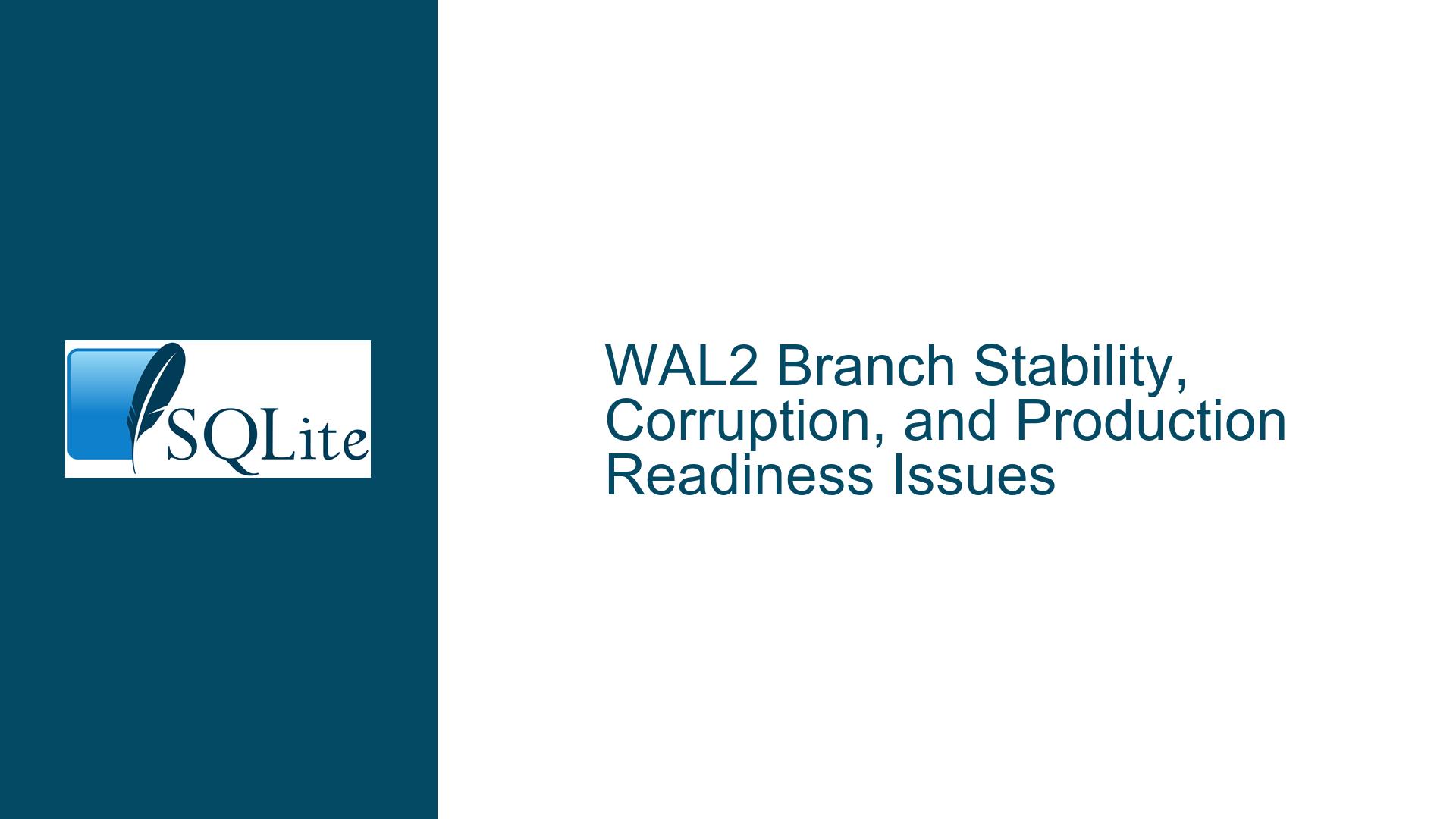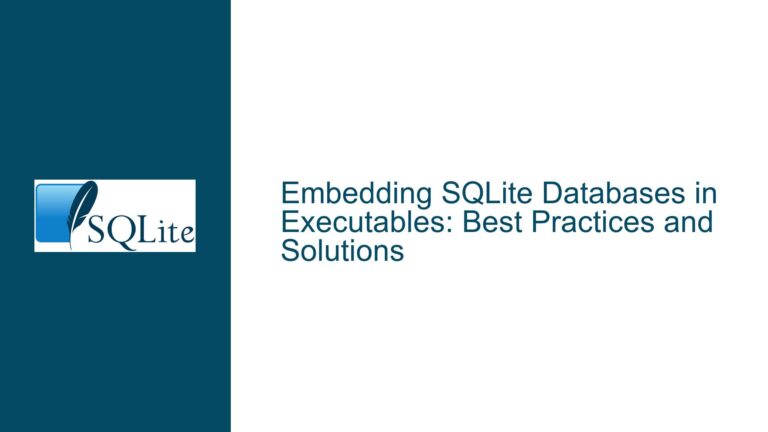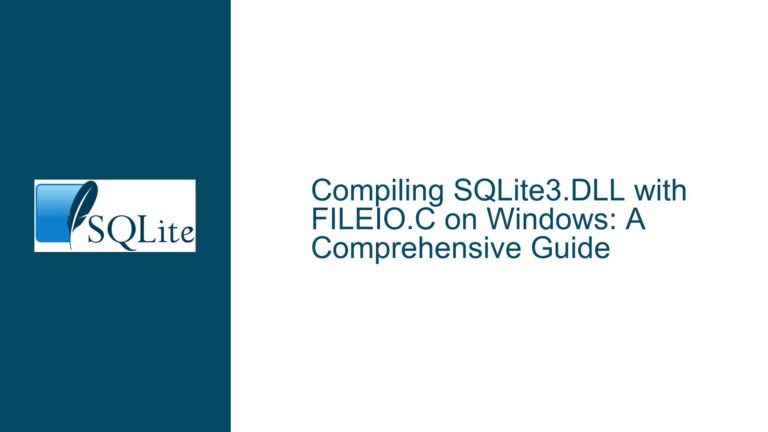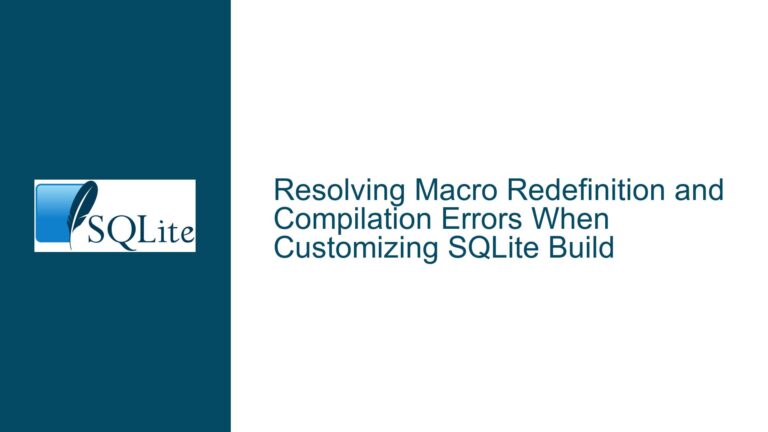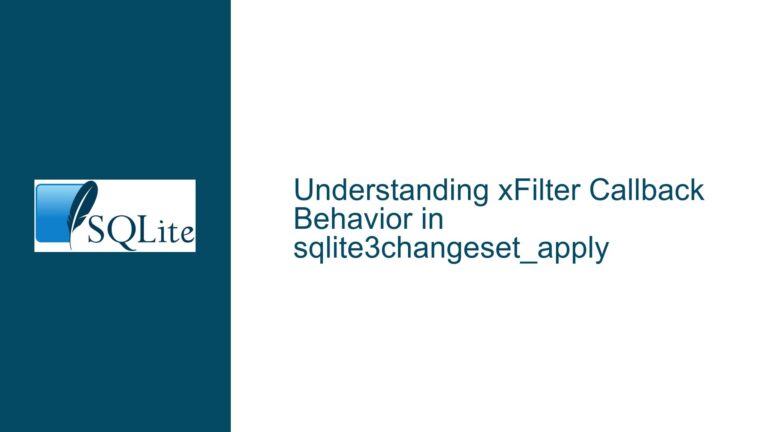WAL2 Branch Stability, Corruption, and Production Readiness Issues
WAL2 Mode Implementation Challenges in High-Write Environments
Issue Overview: WAL2 Branch Behavior Under Continuous Write Pressure
The SQLite WAL2 branch proposes an alternative approach to managing write-ahead logs (WAL) by introducing dual WAL files to address latency spikes caused by checkpoint operations. This design aims to mitigate the "ever-growing WAL file" problem in scenarios with uninterrupted small write operations. Users report success in preliminary testing but encounter critical stability issues when deploying WAL2 in production systems. Key symptoms include:
- Runtime Crashes: Segmentation faults (e.g.,
EXC_BAD_ACCESSon macOS) during database operations, particularly when accessing WAL2-specific structures likepPager->fd. - Database Corruption: Recovery failures with
SQLITE_CORRUPTerrors during database initialization, often accompanied by invalid page size detection (pWal->hdr.szPage=0). - Journal File Artifacts: Persistent creation/deletion of rollback journals despite explicit WAL2 mode configuration.
- Compiler Warnings: Type safety issues like
discards qualifiersduring WAL2 file path manipulation.
The branch’s experimental status is confirmed by SQLite developers, with no official production endorsement. Core implementation risks stem from incomplete test coverage for edge cases like partial writes, crash recovery with empty WAL files, and cross-process synchronization in WAL2 mode.
Underlying Mechanisms: Architectural Vulnerabilities in WAL2 Implementation
1. Pointer Management in WAL2 File Handles
The sqlite3_database_file_object crash (Thread #3) reveals unsafe pointer arithmetic when deriving Pager* from WAL2 filenames. The original code assumes fixed offset relationships between WAL2 suffix strings and their containing structures, violating memory safety when VFS implementations modify filename handling. This manifests as dereferencing invalid pPager pointers during concurrent access.
2. Uninitialized Header Fields During Empty WAL Recovery
Database corruption errors (Thread #9.2) occur when recovering from WAL2 files containing valid headers but zero committed transactions. The walIndexRecoverOne() function fails to initialize pWal->hdr.szPage and pWal->hdr.nPage from WAL headers if no commit frames exist. Subsequent page reads (e.g., during sqlite3InitOne()) attempt zero-byte I/O operations, triggering corruption assertions.
3. Journal File Creation Race Conditions
Despite configuring journal_mode=WAL2, SQLite’s initialization sequence unconditionally creates/deletes rollback journals to enforce atomic database creation. This stems from legacy conflict resolution logic designed to prevent multiple processes from concurrently initializing the same database file. The absence of a SQLITE_OPEN_NOMUTEX-style flag for WAL2 exacerbates this, forcing applications to tolerate transient journal artifacts.
4. Type Mismatches in WAL2 Path Construction
Compiler warnings about const char* to char* conversions (Thread #5) originate from direct manipulation of immutable filename buffers in pRet->zWalName2 assignments. This violates strict aliasing rules and risks memory corruption if modified strings are reallocated.
Resolution Strategies: Mitigation and Long-Term Stability Measures
A. Addressing Immediate Stability Risks
Apply Official Patches for Known Crashes
- Integrate commit c2426ae8a80d61e1 to fix invalid
pPagerdereferencing insqlite3_database_file_object(). This ensures proper pointer alignment when resolving WAL2 filenames to their associated pagers. - Implement 4f5481bf291c39e2 to resolve type qualifier mismatches in WAL2 filename handling, eliminating compiler warnings and potential undefined behavior.
- Integrate commit c2426ae8a80d61e1 to fix invalid
Recovery Logic Enhancements for Empty WAL2 Files
ModifywalIndexRecoverOne()to initialize page size parameters directly from WAL headers, even when no commit frames exist:/* In wal.c, within walIndexRecoverOne() */ pWal->hdr.szPage = (u16)((szPage & 0xff00) | (szPage >> 16)); pWal->hdr.nPage = nPage;This ensures valid page size derivation during recovery, preventing zero-byte read attempts.
Journal File Creation Workarounds
While no flag exists to suppress journal creation, applications can:- Preinitialize databases with
PRAGMA journal_mode=WAL2before production deployment. - Use a custom VFS shim to intercept/journal file creation attempts, redirecting them to in-memory buffers.
- Preinitialize databases with
B. Production Deployment Guidelines for WAL2
Concurrency and Crash Testing
- Implement cross-process stress tests using shared memory and file locking to validate WAL2’s behavior under contention.
- Use
sqlite3_test_control(SQLITE_TESTCTRL_CRASHFAULT_INJECT)to simulate power failures during WAL2 checkpoints.
Monitoring and Alerting
- Track WAL2 file sizes via
sqlite3_db_status(db, SQLITE_DBSTATUS_LOOKASIDE_USED, ...)and alert on abnormal growth patterns. - Enable
SQLITE_LOG_WAL2_STATS(custom compile-time flag) to log checkpoint synchronization events.
- Track WAL2 file sizes via
Fallback Strategies
- Maintain a legacy WAL mode fallback path using runtime checks:
if( sqlite3_exec(db, "PRAGMA journal_mode=WAL2", 0, 0, 0)!=SQLITE_OK ){ sqlite3_exec(db, "PRAGMA journal_mode=WAL", 0, 0, 0); }
- Maintain a legacy WAL mode fallback path using runtime checks:
C. Long-Term Considerations for WAL2 Adoption
Community Testing Contributions
- Develop fuzz tests targeting WAL2’s dual-file synchronization logic, leveraging frameworks like LibFuzzer.
- Submit reproducible test cases (e.g., 21GB database + WAL files) to SQLite’s bug tracker.
Alternative Checkpoint Strategies
For latency-sensitive systems unwilling to adopt WAL2:- Use
PRAGMA wal_autocheckpoint=0and implement incremental checkpoints viasqlite3_wal_checkpoint_v2()in background threads. - Employ a write-ahead buffer with
SQLITE_IOERR_WRITEretry logic to absorb write bursts without blocking.
- Use
VFS-Level Optimizations
Custom VFS implementations can:- Prioritize WAL2 file access using
xShmLock()to reduce contention. - Implement mmap-based WAL2 file management to bypass filesystem latency.
- Prioritize WAL2 file access using
This comprehensive analysis provides immediate mitigation steps for WAL2-related instability while outlining strategic paths for organizations considering its adoption. The experimental nature of the branch necessitates rigorous in-house validation, particularly for systems requiring uninterrupted operation under high write loads.
